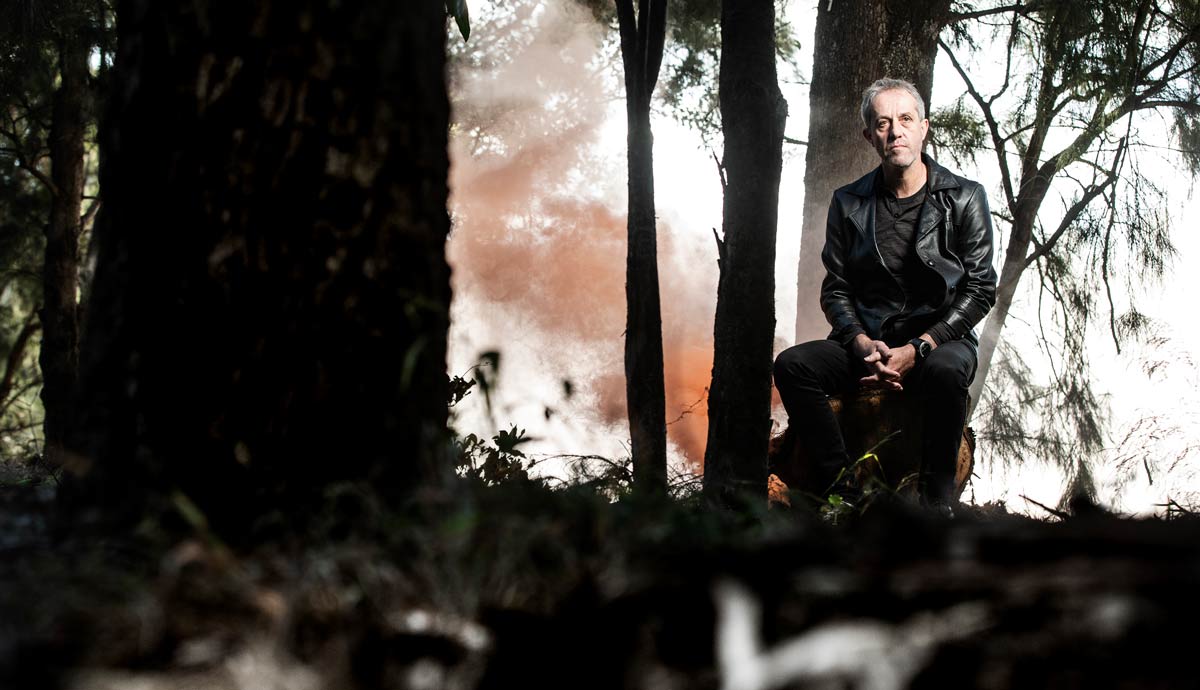June 4, 2019
Smoked out: to burn or not to burn
Bushfire conference tackles trade-off between smoke from prescribed burning and exposure to wildfire.
Researchers from the University of Wollongong-led (UOW) Bushfire Risk Management Research Hub have been investigating why, about once a year, smoke from prescribed burns blankets the Sydney region.
They presented the initial findings from several months of fieldwork around the region at conference today (Tuesday 4 June) in Sydney.
Prescribed burning is a primary tool used by fire authorities to reduce the threat of wildfires to people and property.
Decisions about when, where and how long to burn are weighed against the potential health dangers from the smoke the fires produce.
Exposure to fine particles (PM 2.5) from smoke can cause a range of health impacts, particularly for people with existing heart and lung conditions.
The NSW Rural Fire Service halted hazard reduction burns in late May after smoke drifted east and blanketed the Sydney Basin.
The Bushfire Hub’s first conference included early results from research into fire and smoke behaviour that will improve the accuracy of planning prescribed burns, reducing greenhouse gas emission and human exposure to dangerous particles.
Hub researcher Dr Owen Price said the models used to predict smoke dispersion contained uncertainty, particularly around the actual smoke impact near the fire, and are not well validated against observational data.
“Two key issues are differences in smoke from a wildfire and from a prescribed burn and the accuracy of the smoke dispersion model,” Dr Price said.
“Smoke from a prescribe burn can linger near the fire. Given that prescribed burns are often nearer to communities they are intended to protect; we need to better understand the impact of that smoke.
“We’ve also seen that while the dispersion models predict the general behaviour of the smoke plume reasonably well, they haven’t been able to account for the collapse of the plume at night due to temperature inversion as well as the phenomenon of lofted smoke travelling in a different direction to smoke at ground level.”
Prior to a planned burn, Dr Price deploys remote sensors up to five kilometres from the fire ground to collect local data about smoke travel, while permanent air quality monitors around the Sydney region provide data about the extent of travel.
“Fire services have a very limited window of opportunity in autumn and spring to conduct hazard reduction burns,” Dr Price said.
“It’s a resource-intensive exercise that takes a lot of planning and the last thing they want is to have to cancel a burn because the smoke has settled over populated areas.
“The smoke dispersion models are based on estimates of fuel consumption, the travel of the fire and the completeness of the burn based on moisture content of the fuel.
“Generally, these models are quite good, but when they go wrong, we don’t always understand the factors contributing to bad smoke events.”
In addition to smoke dispersion, Dr Price has been busy collecting wood and leaf litter from forests around Sydney to calculate the fuel loads prior to a prescribed burn and then returning after to see the effectiveness of the fire in reducing fuel loads.
“Current rating of fuel loads is based on a visual assessment, but it’s not precise. We are out there on our hands and knees, collecting the fuel square-metre quadrants and weighing it.
“Do that in enough locations and we can more accurately model the fuel load in a forest. Compare that to a post-fire assessment and we begin to get accurate measures of fuel consumption, which is fundamental to predicting how much smoke will be produced.”
A later stage of the project will track wildfires, to understand the differences in smoke travel between prescribed burns and wildfires.
The Bushfire Hub is a $4 million, five-year project that will provide NSW-centred scientific research needed to ensure the safety of communities, property and the environment.
Today's conference is the first for the Hub, bringing together researchers, fire agencies and land managers to present and discuss the latest research, methods and tools for reducing risk to people and property from bushfires.
Topics in addition to the smoke dispersion include the post-fire recovery of forests and their ability to consume carbon, severity of fires and impact on threatened species, and Indigenous cultural burning practices.
The Bushfire Hub research is being delivered through a partnership between the NSW Office of Environment and Heritage (OEH) and the University of Wollongong (UOW), supported by a team of world-class experts from Western Sydney University, the University of NSW, and the University of Tasmania, and in collaboration with the NSW Rural Fire Service.
